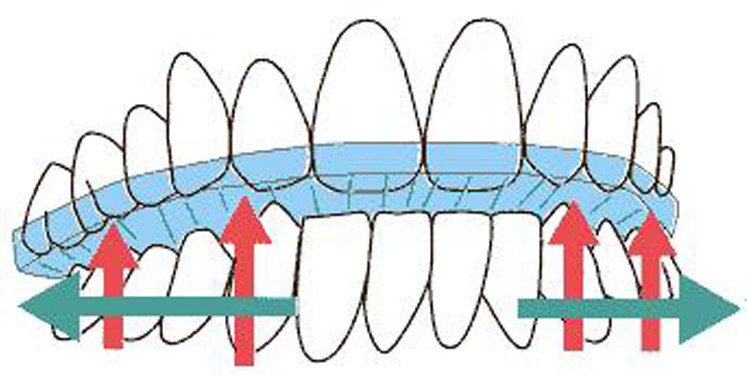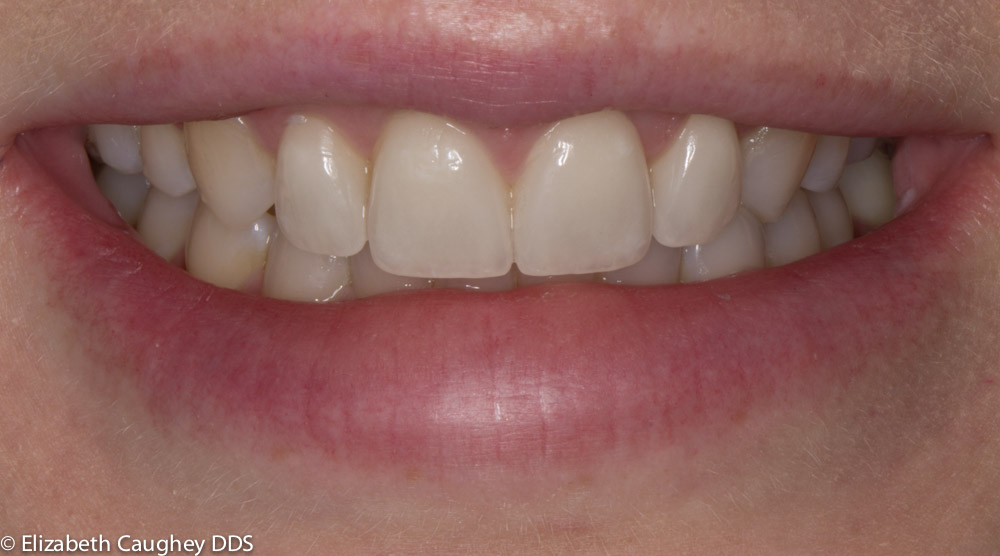A bite splint requires molar support, and particularly at the most distal tooth location. However, due to the shape of the upper and lower jaws’ relationship to one another, this is the portion of the bite splint that most frequently becomes thin and brittle, and thus, broken. Below is a case of fractured acrylic over…
Read MoreSphenoid position is a prominent feature of a R TMCC positional pattern. In that position, the greater wing of the sphenoid is more superior on the Right side, than on the Left. Without regard for the position a patient is in (R TMCC versus neutrality), even the most conscientious dentist will adjust a bite splint…
Read MorePatients with bilateral posterior crossbites tend to have deep palates and bilaterally extended cervical chains. Depending on the degree of interdigitation of the teeth, the balancing interferences of the lingual cusps of the lower molars against the buccal cusps of the upper molars can make the canines out of position from a functional standpoint. …
Read MoreLordosis of the neck is the normal curvature needed for a person to have a full range of motion in rotation, flexion, and extension. Patients with a loss of that cervical l0rdosis can mask the degree of bite distortion present. Patients with bilaterally displaced TMJ disks will frequently have masked the severity of the anterior open bite distortion…
Read MoreThis anterior bite distortion shows an uneven amount of anterior open bite. The upper right canine looks as if it never touches the tooth below, and is called a non-functional tooth. However, even a canine out of position can receive sensory input from a food bolus. Designing a splint to engage this tooth with “kissing”…
Read MoreUnilateral cross-bite in the anterior segment frequently represents an exaggerated midline shift. Using a bite splint deprograms the engrams that posture the jaw. In addition to revealing a less distorted midline, splint therapy commonly results in a more cusp-to-cusp tip orientation at the canine.
Read MoreWhen a patient has an active R TMCC pattern that needs occlusal management, a lower MOOO style bite splint is my go-to intervention. But not all malocclusions are created equal, and the question comes up frequently on how to manage a bite with various degrees of malposition and alternate occlusal schemes. I have attached a…
Read MoreHow lucky am I? My journey learning about dental bite splints began 14 years ago at the Pankey Institute, and I have been honored to teach all about bite splints to other dentists for the past 8 years. In a matter of a few short days, our participants increased their understanding from basic concepts to…
Read MoreI started having issues with my vision—being bothered by light and glare and just not seeing as clearly and I knew it was time for a new prescription. I went for an eye exam and my eye doctor was surprised I even wore glasses. He said my prescription was way too strong and gave me…
Read MoreMigraines and Jaw pain solved with holistic dentistry approach This patient had migraines, nausea, and TMJ pain symptoms for years. She was able to achieve some relief from sequential modalities of chiropractic, physical therapy, and medications, but only to an extent. At her initial exam we discovered significant muscle tension on the left side of…
Read More


